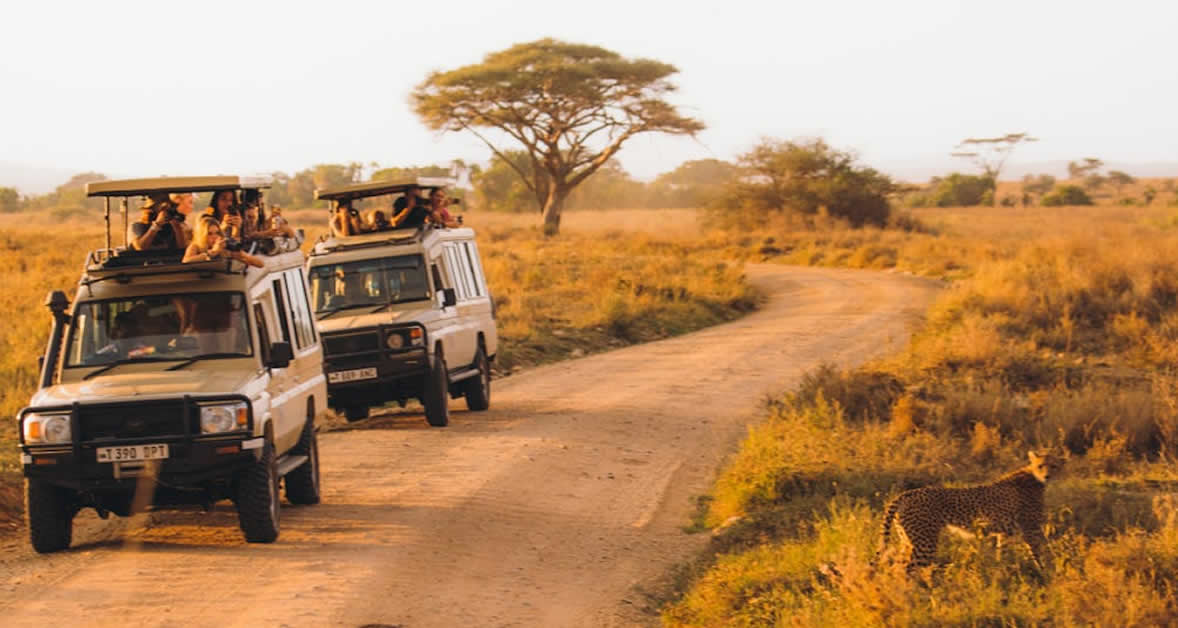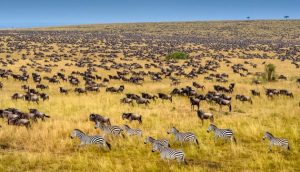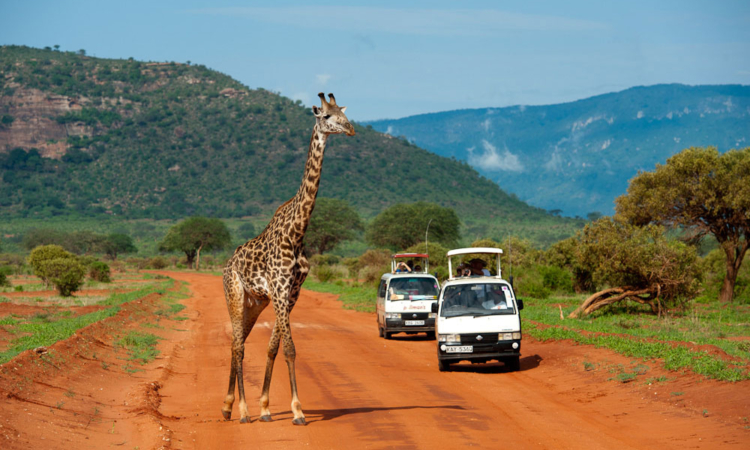
Taking a self-drive safari in Kenya is a fantastic way to explore the country’s breathtaking landscapes and amazing wildlife. With the freedom to set your own pace, this adventure offers a unique and personal connection to nature. Here’s everything you need to know to plan your journey:
Choosing the Right Vehicle
4×4 Vehicles: A sturdy 4×4 safari vehicle is essential for driving through Kenya’s rugged terrains, especially in national parks and reserves. Popular options include Toyota Land Cruisers, Land Rover Defenders, and Nissan Patrols.
Rental Options: Many car rental companies in Kenya offer fully equipped safari vehicles with GPS, rooftop tents, and camping gear.
The type of vehicle you choose to use on your self-drive safari depends on the destinations you planning to visit and the season of the year. For example, if you visit during the rainy season, a 4×4 with a rooftop tent is not advisable, but it is more enjoyable when you visit in the dry season.
Insurance: Make sure you choose a rental company that offers comprehensive insurance for the car just in case of an accident.
Mapping Out Your Route
Before you hit the road, let’s level up your planning game. Here are the details:
Plan your Itinerary: Before you create your safari itinerary, research destinations, seasons, and wildlife highlights. Balance game drives with cultural or relaxation activities. Allow flexibility for unexpected wildlife sightings. In case you are going on a long safari, it’s advisable to include rest days in your safari itinerary. Don’t forget to include iconic destinations like Maasai Mara, Amboseli, Tsavo, and Samburu. For a coastal twist, consider adding Diani Beach or Lamu.
 Driving Conditions: Do your homework on road conditions and weather. Knowing the terrain and the forecast is key to avoiding a total ‘what were we thinking?!’ moment. Also, check the distances between destinations – some places are further than they look on a map!
Driving Conditions: Do your homework on road conditions and weather. Knowing the terrain and the forecast is key to avoiding a total ‘what were we thinking?!’ moment. Also, check the distances between destinations – some places are further than they look on a map!
Vehicle & Fuel: Some destinations need high-clearance vehicles – think 4×4 – and extra fuel. You don’t want to run out of gas in the middle of nowhere; that’s a total ‘nope’ from me. Fuel your vehicle at the last ton center before you enter any national park.
Navigation Tools: Download offline maps before you go – some areas have no cell service. Trust me, you don’t want to rely on guesswork navigation.
Budgeting for Your Safari
4×4 Vehicle Costs: Rental prices in Kenya always depend on the type of 4×4 you need and how long you renting the car. Most car rental agencies offer discounts on long-term rentals. 4×4 vehicle rentals in Kenya range from $85 to $200 per day, depending on the model and equipment.
Park Fees: Entry fees vary by park, typically ranging from $40 to $80 per adult per day.
Accommodation: Options include budget campsites, mid-range lodges, and luxury tented camps. Prices can range from $20 to $500 per night.
Fuel and Supplies: Factor in fuel costs and stock up on essentials like water, snacks, and first aid supplies.
Essential Tips for a Smooth and Safe Self-Drive Safari
Park Regulations: Before going on your self-drive safari adventure, thoroughly familiarize yourself with the park’s regulations. This includes understanding designated routes and trails, maintaining a safe distance from wild animals at all times, and adhering to speed limits within the park. All national parks in the country have almost the same guidelines on where you can and cannot go, and respecting these rules ensures both your safety and the preservation of the natural environment. Ignorance of these rules can lead to penalties and, more importantly, could put both you and the animals at risk.
Optimal Timing: Wildlife viewing is significantly enhanced by strategic timing. Early mornings and late afternoons are the perfect times for wildlife watching, as animals are most active during these cooler periods. The midday heat often causes animals to seek shelter, making sightings less frequent. Consider the specific animals you hope to see; their behavior and activity patterns may influence the best time to visit.

Game Drive in Tsavo National Park
Safety Precautions: A well-prepared self-drive safari requires prioritizing safety. Always carry a well-stocked first-aid kit, enough drinking water, and snacks. In remote areas, having a spare tire, a basic toolkit, and a fully charged mobile phone with a local SIM card is crucial. Before setting off, inform a reliable contact of your detailed itinerary, including planned routes and estimated return times. This ensures someone knows your whereabouts and can raise the alarm if necessary. Consider buying or renting a satellite phone for areas with limited cellular service.
Wildlife Etiquette: Respect for wildlife and their habitats is very important when you are on self self-drive safari in Kenya. Maintain a safe distance from animals, never attempt to feed or interact with them, and avoid making loud noises or sudden movements that could scare them. Remember, you are a visitor in their home, and your actions should minimize disruption to their natural behavior. Use binoculars and cameras responsibly, and never use flash photography, which can disorient and distress animals. Observe from a distance and appreciate their natural beauty without interfering.
Why Choose a Self-Drive Safari in Kenya?
Flexibility: A self-drive safari in Kenya offers ultimate freedom, allowing travelers to explore the vast savannah and wildlife of Kenya at their own pace. Unlike guided tours with fixed itineraries, this adventure can allow you to spend a lot of time you need on wildlife sightings, capture stunning landscapes, and discover hidden gems on your terms. The open road becomes your gateway to unforgettable moments and a truly personalized experience.
Budget-Friendly Adventure: Self-drive safaris provide a cost-effective way to experience the magic of Kenya. By eliminating the cost of a professional driver and guide, you significantly reduce the overall expense. This allows you to allocate your budget toward other aspects of your trip, such as accommodation upgrades, extended stays in your favorite locations, or purchasing souvenirs to remember your incredible journey.
Thrill of the Wild: Embrace the thrill of navigating Kenya’s wilderness on your terms. Feel the adrenaline as you venture off the beaten path, discovering hidden trails and secluded spots rarely visited by guided tours. The sense of accomplishment and independence is exhilarating, creating memories that will last a lifetime. It’s an adventure that fosters self-reliance and deepens your connection with the untamed beauty of Kenya.
This guide provides a comprehensive overview to help you plan a memorable self-drive safari in Kenya.
